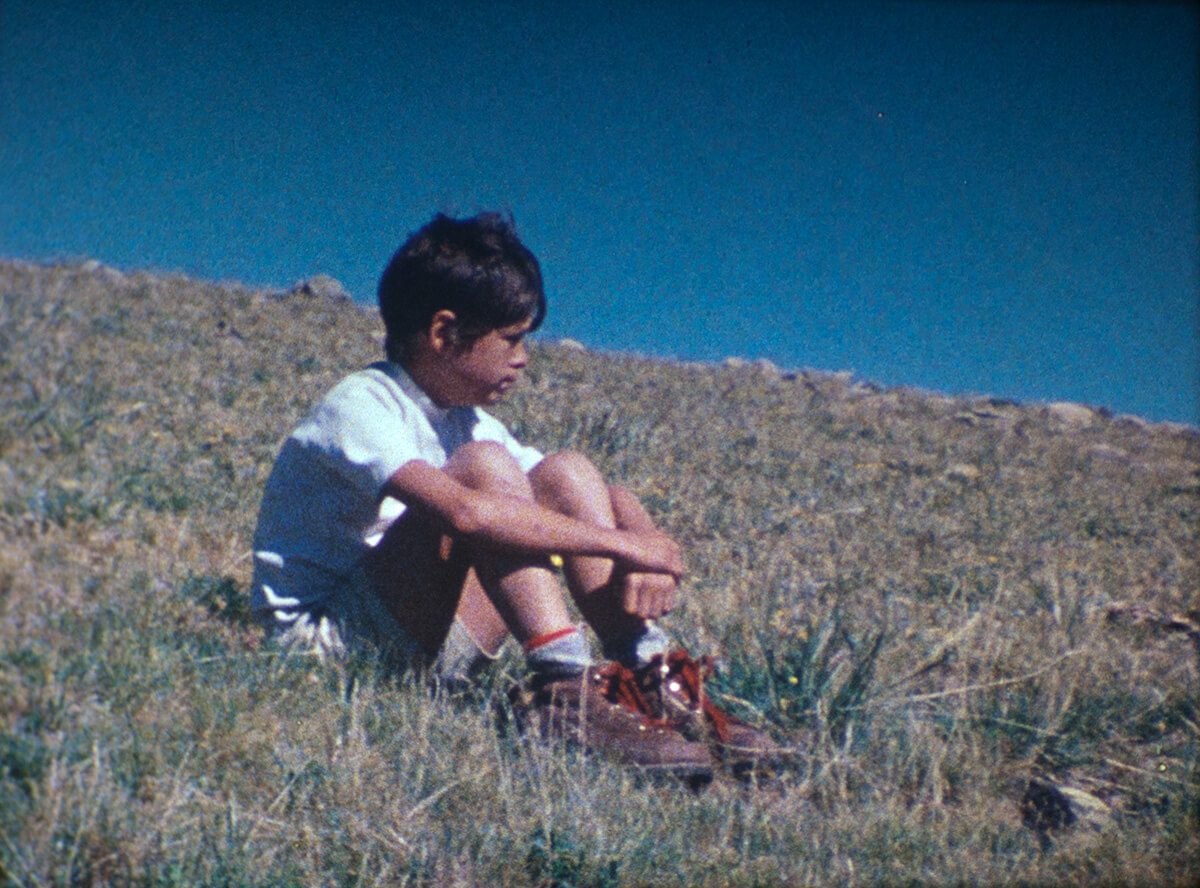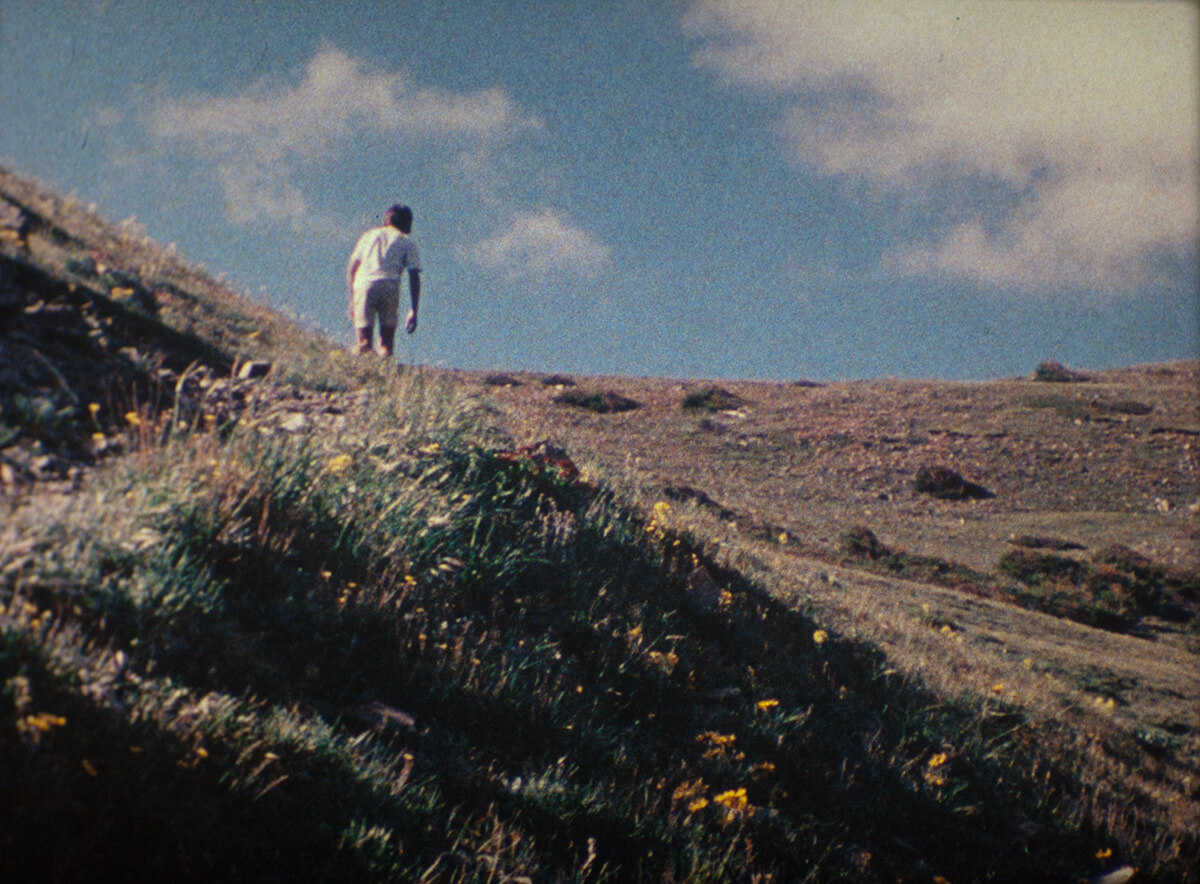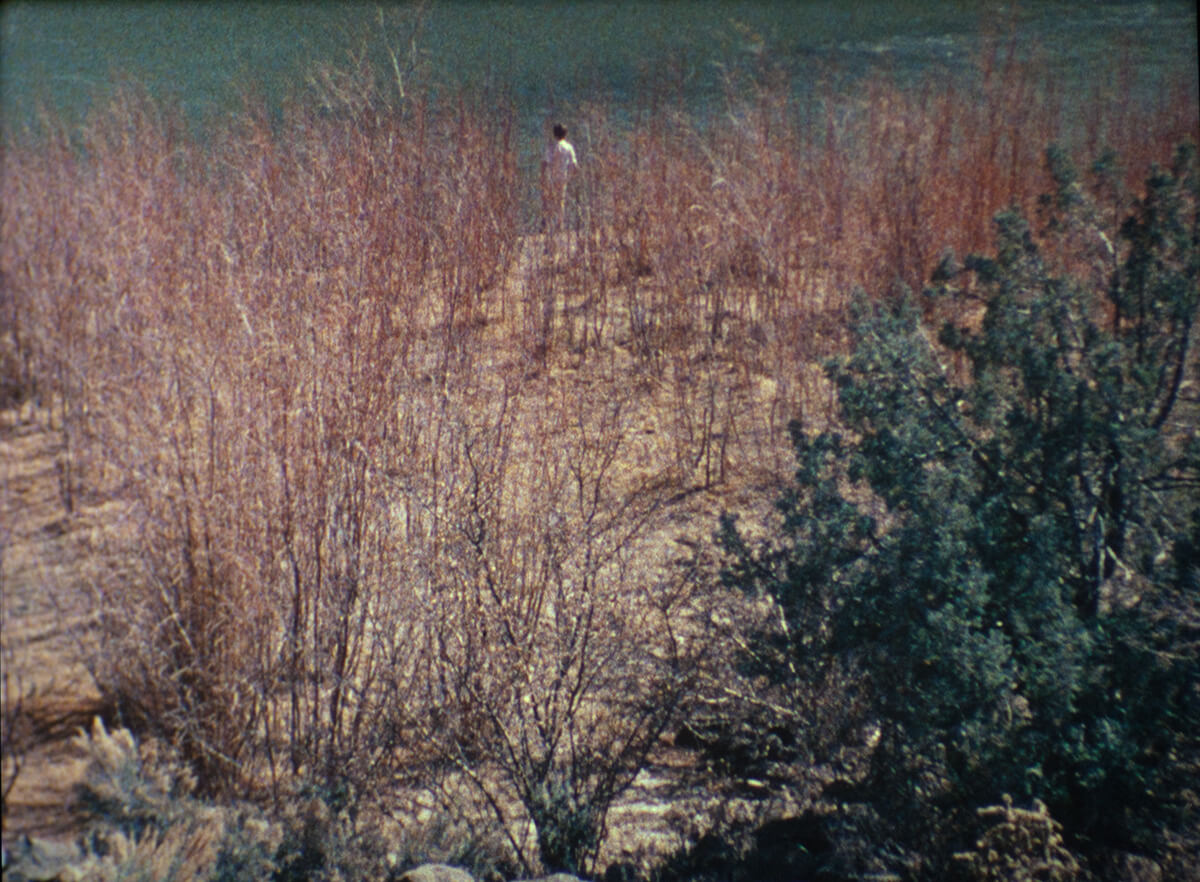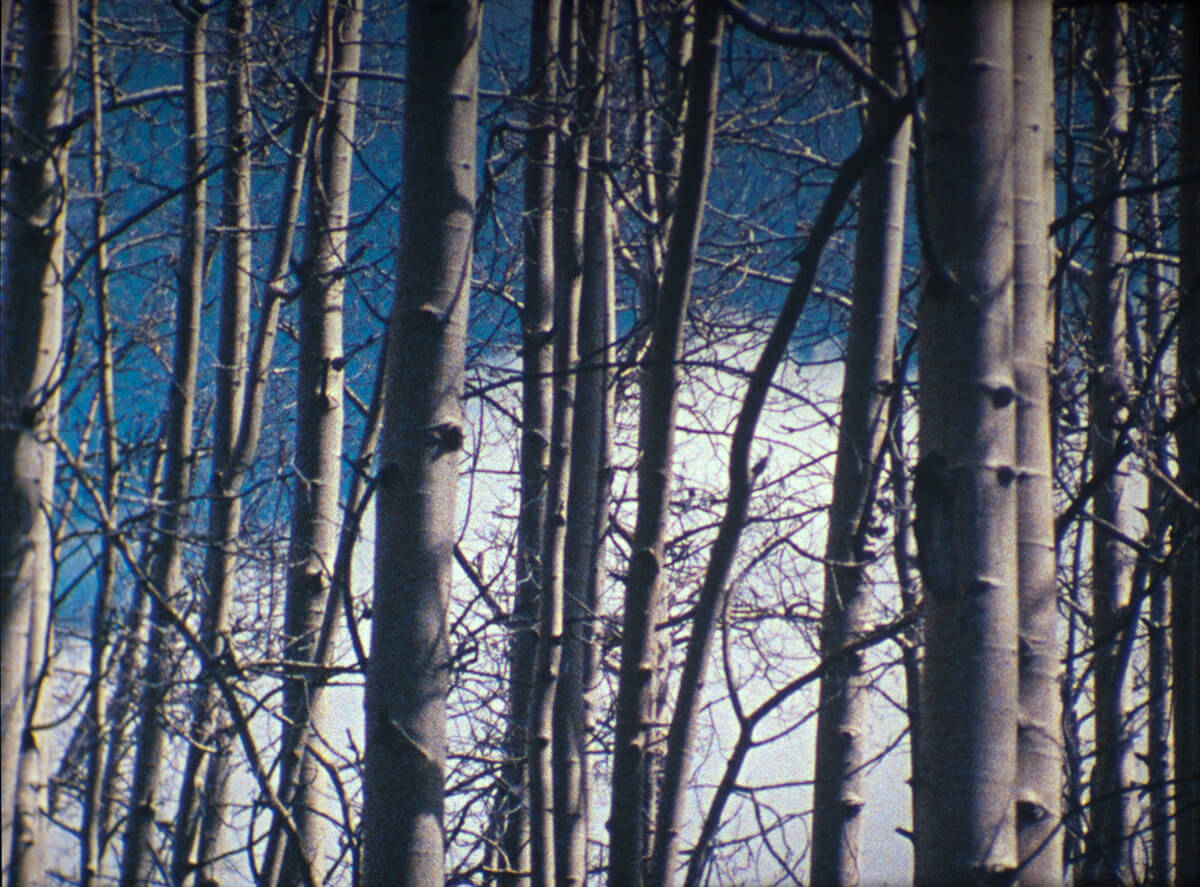Meeting Gabriel
Matthew Jeffrey Abrams
April 9, 2018

I met Peter Mayne at the Ancient Way Café, a small, folksy general store of the rough-hewn, wild-west variety that bejewels a desolate stretch of New Mexico 53, which itself bejewels El Malpais National Conservation Area—an equally desolate mountain range near the state’s western border. Here, at the Ancient Way, we are far from the Rio Grande or the tourist-trap towns of Santa Fe and Taos. Neither badlands nor high desert, neither subalpine zone nor dense forest, the land around the Ancient Way feels exactly that—something ageless and primordial, and yet nascent, undecided. This is the land of a bygone earth, but one still brooding and unsure, still muddy beneath our feet.
To reach the Ancient Way, you must push into the frontier, into the high-altitude valleys and pygmy forests that have hosted the Zuñi and the Navajo for a thousand years. And if you were to travel to the Ancient Way today, or the nearby town of El Morro, you, too, might encounter Peter Mayne. And if you did encounter him, this genial man in his mid-fifties might engage you, speaking in the slowly lilting orotund that marks his borderlands English. And if Peter spoke long enough, you would realize that everything this native New Mexican says, and thinks, is oriented towards the earth. In this alien landscape, he speaks with an impressive rootedness. Every sentence contains a cardinal direction, or a glancing mention toward some provincial landmark.
He might, for instance, draw you a map of the Upper Rio Grande, detailing roads that no longer exist. Or he might tell you how he and his father chopped firewood for a living when he was young. How he was raised on a hippie compound in the Sangre de Cristo Mountains, how his family survived without indoor plumbing or running water until he was seventeen. But if you are lucky, this man, who springs from the earth like the squat piñon trees peppering the land around him, might tell you about the summer he spent with a woman named Agnes Martin.
In 1976, Peter was fourteen. His neighbor, a reclusive painter from Saskatchewan by way of Lower Manhattan, spoke to his parents about hiring him. They agreed, and the painter offered the hippie child a summer-job. Over the next three months Peter Mayne and Agnes Martin made periodic road trips in the artist’s International Scout II: that iconic proto-SUV whose style echoes Martin’s—regimented, rectilinear, robust. Together they drove as far west as Arroyo Laguna State Beach, California—a sandy embayment below Hearst Castle—but they mostly stayed within New Mexico’s Southern Rockies. And together they made a movie: Gabriel.
The project was simple. Peter and Agnes would drive to a remote wilderness and then hike into the backcountry. Once a suitable location was found, the elder would direct and film the younger while he traversed the landscape. Spliced together, the result is an eighty-minute film starring Peter Mayne, the great American West, and literally nothing else. It’s a singularly unique project in Martin’s oeuvre, and a critical one, too. But despite Gabriel’s importance, we know little about it. It has received almost no scholarship, it is rarely screened, and in the four decades between the film’s release and my visit to the Ancient Way nobody had interviewed Peter Mayne. Nobody had even bothered to find him.
*

We had an appointment, but I was early. One month earlier I had asked MoMA to screen Gabriel, and when the credits rolled I saw Peter’s name. I knew I wanted to speak to the man, so I paid an online service to dig up his address and mailed him a letter. A few days later he called and invited me out. And then, exactly one week before I reached the Ancient Way, I rose at dawn, packed my car with the last of my belongings, lit a cigarette, and left New Haven, Connecticut. I’d just “gone A.B.D.” as they say—all but dissertation—and I was leaving New England and Yale University to begin my doctoral research on American Modernism and return home to Los Angeles. Serendipitously, Peter was living in the same region as several archives I needed to visit, so I simply added him to my itinerary.
I made an obligatory pilgrimage in Western Pennsylvania to Frank Lloyd Wright's Fallingwater before crossing the Midwest. I decided to enter New Mexico in a backdoor fashion, weaving my way through the grasslands and high plains of western Kansas and eastern Colorado, then up into the Rockies, and then finally along the western flank of the Sangre de Cristos, moving south until I dropped into Taos Valley, a bygone floodplain now quietly resting seven thousand feet above sea level.
Taos might be touristified, but it’s still a special place. This is the land of adobe and sage; of Los Hermanos Penitentè—a self-flagellating Catholic brotherhood; of the eastern Pueblos and the early modernists; of Dennis Hopper and, once upon a time, more hippie compounds per capita than anywhere else in the country. People enter Taos and never leave. Some claim it has a special magnetic force. Others, some deep, dark-blooded animism. In any case, it was Georgia O’Keeffe’s first New Mexican home. Later, it was Agnes Martin’s last. I spent the remaining week here, passing my time at Taos Pueblo, several nearby archives, and the Taos Art Museum. Here, seven Agnes Martin paintings adorn an octagonal, Rothko-Chapelesque gallery, with Donald Judd benches anchoring the center. It’s an extraordinary space, pulsing with a queer and quiet energy. It became an overture of things to come.
I left Taos before sunrise, following the Rio Grande’s steep gorge downstream before hooking west to the Ancient Way. I arrived, and waited on the veranda. It was midday, warm, and humid—monsoon season, as they call it here. And then an old pickup approached, sky blue and derelict, and a man—wiry, dark-haired, assured and loping—emerged with two children. The children ran inside; Peter shook my hand, sat down, and began to speak without ceremony. “When I got your letter,” he began, “I was shocked.” Indeed, Peter had expressed considerable surprise during our initial phone call. “You're the first person ever to track me down.”
Peter Mayne, it turned out, had spent much of the past twenty years living off the grid. But for the next two hours he sat with me and my recorder, and he told me things about his old friend Agnes that no one had ever heard before.
*

Gabriel, many critics will qualify, and always with a twinge of regret, is somewhat of a failure. The film disappoints many because it seems to lack the structural rigor and aesthetic harmony that Martin’s paintings command. Some feel that the film, with its unabashed focus on landscape, tarnishes, if not negates, Martin’s larger aesthetic credibility. This should come as little surprise. Early art historians periodically argued that Martin’s paintings and drawings, and especially the horizontally-banded ones (like those adorning her Taos chapel), might have some subjective anchor—an actual horizon.
In response, newer, edgier, and more post-structural scholars counter-argued, hoping to colonize Martin’s works in the name of the avant-garde, the objective, and, of course, flatness. But because Gabriel is the artist’s only film, because, as Peter notes, she took the project very seriously, and because the end result is almost an hour and a half of nonstop landscapes, it seems ineluctably significant to Martin’s larger project. Unless you ignore it altogether, which is the prevailing fashion.
My point is that nobody calls Gabriel a masterpiece. It was a painter’s first and only film, and for that it’s forgiven, and then, like a child’s cringeworthy play, wordlessly forgotten. For many, sitting through eighty minutes of Gabriel is an exercise in pitiful admiration followed by merciful amnesia. In some senses you can’t blame them. I consider the work brilliant and canny, but the first time I endured a screening, even I fell asleep.
Gabriel might be soporific, but make no mistake: it’s still enormously complex, and just as rigorous as Martin’s paintings. The film opens with our first vista—a massive, snow-capped mountain looming high above the camera. This is likely the 13,000-foot high Wheeler Peak in the Sangre de Cristo Mountains—New Mexico’s highest point, and an apex, Peter told me, that the two summited. There is perfect silence. We cut to Arroyo Laguna State Beach, and then cut away. Now Peter appears on the sand (I remember when I first saw him at the Ancient Way, and thinking how much he still resembled his childhood self: self-possessed, sanguine). We see Peter from behind; he stands still, inches from the lapping surf. Music begins; this is the only audio accompaniment for the film’s entirety. It is an early Variation from Bach’s Goldberg Variations—the famous 1955 version recorded by the Canadian piano virtuoso Glenn Gould. This remains the most overlooked element in the entire film.
The short composition finishes, and then silence returns. This will occur periodically; one of Bach’s thirty Variations will announce itself, unwind, and then disappear. Meanwhile, Peter is transported back to his native landscape. He faces a mountain—perhaps the same one from before. He is still, and then on cue (literally, on Martin’s hollering ok, start walking!), the ruddy, olive-skinned boy in oversized hiking boots tromps forward. And that’s it. That’s the next seventy-five minutes of Gabriel, only sometimes we are beside Peter, and sometimes we are in front of him, but usually we are behind, like in that opening shot. And always, always, the boy is walking uphill.
Much of the film depicts Peter walking upstream along a river (“many rivers,” Peter told me, “but mostly the upper Rio Grande”), although Martin regularly leaves the child for extended close-ups of river rocks and lengthy shots of frigid water cascading over some smooth, unspectacular boulder. Other times, Martin creates extended, macro shots of a flower bud. But mostly it’s just Peter walking. There isn’t a perfect linearity to the uphill march, nor does any site-specific narrative emerge. Peter remembers the filming as quite random, and geographically disparate. Ironically, Gabriel unfolds in the exact opposite manner of my travels across the same land; I went high to low, the film goes low to high. I hadn’t noticed this until Peter, always with an eye to the earth, pointed it out.
Ultimately, the film travels through five distinct ecologies, and while they often lapse or degrade into earlier phases, the undeniable trend is downstream to upstream—or, one could say, from sea to summit. Soon after the beach Peter enters the riverbank, the gorge. Here, sprays of river grass limn the Rio Grande, which bulges and rushes intently downstream. Eventually Peter hikes from this foundational layer into New Mexico’s hollows, or lowlands. Scrub brush and dwarf trees dominate this region. Among the omnipresent dry grass, which covers each scene like a golden-brown cloak, we find Rio Grande cottonwoods and desert willows—both squat, bulbous, and a piercing emerald green; Peter also ranges among the lighter colored dogwoods and the attenuated limbs of the occasional olive tree. Although, more than anything else, we see endless patches of sagebrush and another kind of tree—squat and round like a green Easter egg, and roughly twenty feet tall: piñons.
Peter encounters the region’s third ecology. This is where the forest, as most consider it, takes root. Around the boy and reaching farther above him, Douglas firs, Oregon pines, and enigmatic Colorado blue spruces cling to steep chutes and escarpments. Their base branches shoot out so wide that each tree, from a distance, abstracts into a greenish blue and uncannily triangular specter. But the loveliest trees that we encounter, besides the massive and patriarchal Gambel oaks that dot the lower meadows, are the occasional groves of quaking aspen, whose teardrop leaves and narrow limbs billow operatically in the smallest breeze. During one powerful passage, a later Variation accompanies Peter while he navigates one of these dense aspen groves.
Finally, Peter reaches the valley’s ultimate, alpine region. Here we find meadows and tussocks of wildflowers, but the peaks are mostly gray, desolate, and rocky. A moonscape. Peter sits on a steep and grassy escarpment, viewing the regions whence he came. Gabriel ends with a shot of that same beach, and so we move full circle—sea to summit to sea.
*

“She said she wanted to create a consecutive, moving-up experience…but as a life journey, where you move from a low place to a high place. That and she just really, really enjoyed scenery.” After forty years, Peter barely remembers the film’s appearance, but he does remember this—the residue of a narrative, the unashamed love of landscape. Peter is not alone here, either. It was the great critic Lawrence Alloway in 1973 that first considered Martin’s paintings as analogues of nature, which initiated a reading that Rosalind Krauss later lamented as the abstract sublime.
Krauss, the art historian who has had a greater impact on the field of contemporary art criticism than any other, is also one of the few scholars to write explicitly about Gabriel. In her essay, which she wrote for Martin’s 1993 retrospective at the Whitney Museum, Krauss situates the film in her unique, theoretical fashion. She also responds to Alloway, hoping to create a greater distance between the works and their potential crypto-landscape identity. For her, Gabriel isn’t about landscapes at all, but something much more complex and cerebral.
Krauss, the consummate New England art historian—D.C. born, Harvard trained and New York-based—manages to write an entire essay about Gabriel while barely discussing, or even describing, her putative subject. There are maybe three paragraphs in eleven pages that stoop to formal description. The rest is her typical semiotic two-step. Suddenly we are discussing Hubert Damisch and phenomenology; Descartes and Brunelleschi’s quattrocento experiments with linear perspective; Alois Riegl and kunstwollen. In other words, we get art history as thrift-store philosophy. Here, for instance, is Krauss on Martin’s “objectivism”:
This objectivism, unfolding within the twentieth century, would itself have to be seamed into the fully subjectivist project that was put in place following the Renaissance, a Cartesian project that has only intensified steadily into the present. Except that at the beginning of the century, modernist painting opened up, within an ever-growing dependence of the work on the phenomenology of seeing (and thus on the subject), what we could call an “objectivist opticality,” namely an attempt to discover—at the level of pure abstraction—the objective conditions, or the logical grounds of possibility, for the purely subjective phenomenon of vision itself.
Fascinating, yes. A brilliant description of modernism’s will to abstraction, yes. But we’ve moved pretty far afield from Gabriel. The most infuriating thing about Krauss’s essay is that this incredible scholar refuses to see, or even look at, what she supposes to analyze. Gabriel is hard to watch, but it’s as if Krauss gave up after the first five minutes. She’s so eager to use Gabriel to penetrate Martin’s oeuvre, and to use Martin’s oeuvre to penetrate modernism, that she has no time to detect, say, the film’s subtle elevation gains: the way that the red willows (ubiquitous along New Mexico’s riverbanks) give way to groves of quaking aspen, or how these groves of aspen give way to evergreens, or how these evergreens give way to bald, subalpine summits. Krauss can’t even be bothered to mention Bach.
And what about Bach? It strikes me that the Baroque traditions of fugue and chaconne—which in their own ways are about creating a theme and then unpacking it through a concerted series of formally connected yet entirely distinct re-imaginings—rhyme quite deeply with Martin’s own process. Even her Taos chapel, where we find seven banded canvases that are all unique, and yet, quite clearly, variations on one given form, has more to do with Bach than, say, Malevich.
And this is where careful attention to Gabriel’s own form pays dividends. The film, really, is roughly forty variations on a two-minute theme. We see a boy walking. Now we see a boy walking. Now we see a boy walking. Now we see a boy walking. Now we a see a boy walking. Now we see a boy walking.
In each variation, the theme’s constituent elements return—boy, river, mountain—but always in some new and idiosyncratic way. And of course, all the while we are subjected to Bach’s own famous variations on a theme. Agnes Martin could not have made it much clearer. That she chose, of all the various recordings, that of Glenn Gould—a man who at 22 became the first pianist to ever record the composition, arguably the first ever to play it on the piano, and whose obsessive commitment to interpreting Bach would famously lead him to re-record the entire Goldberg Variations in 1981—should also not be overlooked, and certainly not ignored wholesale as it has been for forty years.
Gould’s artistic project parallels Martin’s quite closely. Both were modernists; both were Canadian; both had an obsessive commitment to form—specifically, the variations or repetitions within form. And both were so fastidious in their work that they would rather destroy a piece than settle for anything short of perfection. Hence Gould’s re-recording of the work that haunted him. Hence Martin’s burning of her canvases before leaving New York in 1967. “I used to say to her,” Peter told me “‘if you make a mistake with a painting and you need to get rid of it, you should give it to me,’ and she’d say, ‘no way—it’s flawed, needs to be destroyed.’”
I asked Peter about this idea, about how Martin could work figuratively on a visual level and mathematically on a structural level; I wanted to know how those two lines could co-exist. “Sometimes the two lines don’t even cross in her thinking,” he replied. Nary a critic or scholar has ever expounded so cannily on Martin’s aesthetic. Try to imagine Agnes Martin in this fashion: as an artist whose works inhabit two distinct, seemingly contradictory states, who holds those states bilaterally, and yet somehow keeps the two from ever “crossing.” That’s an utterly sophisticated interpretation, which accounts for Martin’s commitment to abstraction and her love of landscape without forsaking either. Who needs Descartes when you have Peter Mayne?

Peter also stressed how serious Martin took this project. “I’d come in to her studio and there’d be chunks of film this long all over the floor,” he said, stretching his arms as far as they’d go. “She’d be looking at them in the light box and sticking them together with scotch tape.” It’s only through speaking with Peter that we learn other subtleties about Gabriel, that, for instance, much of it was shot in the river gorge near Abiquiú. All of a sudden, Martin’s close-up flowers take on a new meaning, because now we know that she likely shot them in the shadow of Ghost Ranch, Georgia O’Keeffe’s home and studio, where she busied herself painting that same flora. But what Peter remembered most about his summer with Agnes Martin was her warmth, her gentleness towards him, and her insistent desire to educate:
She liked to talk about her own early days, when she was a little girl, and her dad would take them every couple of years on a car trip, and they’d cross the continent…we had a really good summer…there was a prison riot, which gave us a lot of topics for conversation. It was an interesting time because it was like everything we saw and did became a classroom, in which I got a big lecture about how life was…we talked all the time.
I love picturing Martin like this—not as the reclusive genius that scholars like Krauss are desperate to mythologize, but as a woman from a New Mexican community, a person with a will to educate—someone who takes an interest in a young man’s life, and teaches him about the world during interminable road trips across the Southwest. This, too, is Gabriel.
*
Unsurprisingly, Gabriel became a hinge point for the young Peter Mayne. “It changed my life rather significantly. I became a road person, and I attribute part of that to this.” Gabriel also became a hinge point for Martin. She even planned, and ultimately executed, a second film. Stranger than the first, Martin dragged stage-coach props into the New Mexican high desert and directed Japanese kabuki dancers that she hired from San Francisco in what we can only imagine were intensely surreal performances. But after months of work, which included a trip to Vancouver to film the conclusion, Martin felt unsatisfied with the results and destroyed all the footage. She returned to painting and never filmed again.
After two hours, I thanked Peter for his time. He smiled and examined the reddish hills rising above the pygmy forest just beyond New Mexico 53. “Anytime,” he said, rising to his feet. The man stretched his lanky body into an arc, and then collected his children. He herded them into his sky-blue pickup, turned the engine over, and drove away. I left the veranda and entered my own car. I pointed it west, still smelling the piñon and the sage, and I finished my journey back to the sea.